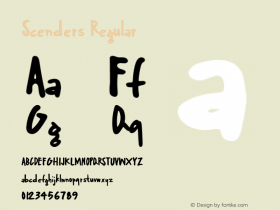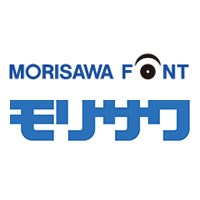
Last month, on Saturday, June 8th the European Design Awards 2013 Ceremony was held in the Yugoslav Drama Theatre (Kralja Milana 50) in Belgrade. The best designers from all corners of the continent gathered to recognise and reward their achievements of the previous year. Gold and silver award winners were invited to collect a trophy and/or a diploma on stage during the ceremony. The European Design Awards celebrate the best in graphic design, illustration and digital design in Europe. This year the European Design Awards received a record number of submissions. A difficult task for any, but the ED-Awards jury, made up of representatives from 15 design magazines (coming from 15 different countries), claims to be the most competent of its kind. They awarded a total of 29 gold and 62 silver and 65 bronze prizes in 34 distinct categories ranging from "Brand Logo" to "Mobile Application". In the category "Original Typeface" seven typefaces or families were awarded.

Winners of the ED-Awards 2013 take to the stage for the family picture. Photo by Relja Ivanić
Gold Award
Gold Award | Tabac Slab
Foundry | Suitcase Type Foundry
Designer | Tomas Brousil
Tabac Slab originated through the combination of several contradictory influences, resulting in a versatile low-contrast slab serif. The character shapes mix brisk serifs and refined calligraphic details, thus creating an original concept that draws influences from both book typography and advertising graphics. The sturdy serifs aid legibility in long texts, while smaller design details realise their full potential in display sizes. The basis for the Egyptienne was Tabac Sans which pairs harmoniously with the Slab. The addition of bracket-less serifs give the typeface more heft, and solidly anchor the letter forms along the baseline and x-height. The family offers a balanced alternative for typographers who find sans serif text faces too restless.
Besides a large number of arrows, numeral styles and other assorted icons, the family also contains alternate shapes for the lowercase "a" and "g", and the uppercase "Q". Two special stylistic sets convert uppercase compositions into text blocks, respectively as letters between two lines or knocked out of a negative black field. This allows for highlighting of prepositions and conjunctions, or even whole parts of texts, offering an even greater diversity in headline and advertisement typesetting. The wide range of weights makes the typeface work in all thinkable sizes – the Regular and Medium styles can be used as modern text fonts from size six to fourteen points, while the Light styles can function as optical sizes in larger sizes. The heavier weights have a commanding yet friendly appearance in display use.
The family's consistent vertical proportions, wide range of glyphs and rich OpenType features guarantee that Tabac Slab is an excellent counterpart to any other member from the Tabac super family. Next to the original serif Tabac available in four grades, Tabac Sans, and the fixed-width Tabac Mono, this latest addition helps broaden its already impressive spectrum of typographic expression.
Gold Award | Baldufa
Designers | Ferran Milan Oliveras, Pilar Cano
Ferran Milan Oliveras, type designer with Dalton Maag, designed Baldufa to be used in catalogs and small publications with cultural content (art, design, etc…).
One of the most distinct features of the design are the serifs, different in shapes at the top of the ascenders, baseline or x-height. The latter ones emulates those from the old printed books, distorted as a result of the strike of the metal on the paper, shaped like a big dot it escapes from the traditional rectangular shapes. Instead of aiming horizontality (like the serifs at the ascenders or baseline) it introduces more rhythm and movement with this dot repetition. Ink traps add contrast in junctions, but also are a nice feature introducing personality to the design.
The thickness in the main vertical stem progressively change from thin to thick above the x-height, and the junction between main stems and curved strokes of the bowls are extremely thin, creating movement in the text.
Baldufa also won Bronze at the Morisawa Type Design Competition 2012.
Silver Awards
Silver Award | Tablet Gothic
Foundry | TypeTogether
Designers | Veronika Burian, José Scaglione
Composing headlines correctly takes a lot of skill, especially in periodical publications where there is need for both flexibility and graphic coherence. Tablet Gothic was originally engineered as a titling family, designed to assist publication designers who require output for both traditional printing and a variety of digital platforms. As such, this grotesque sans serif looks to the future of publishing with a clear understanding of its history, and incorporates references harkening back to nineteenth century Britain and Germany. Tablet Gothic delivers the sturdy, straightforward and clean appearance expected from a grotesque, yet with more than enough personality to make it stand out on the page. With a staggering 84 styles – six widths from Compressed to Wide, all in seven weights from Thin to Heavy with matching obliques – there sure is a Tablet Gothic font that does an exemplary job and performs well both technically and aesthetically, whatever the publication format is. Furthermore the rounder styles Tablet Gothic – Wide, Normal and Narrow – achieve amazing results at the smallest sizes, producing a beautiful texture and highly readable blocks of text.
Bronze Awards

Bronze Award | Eskapade
Foundry | TypeTogether
Designer | Alisa Nowak
Eskapade is the result of research into confronting Roman with German blackletter forms, mainly fraktur letters. The idea was to adapt these "broken" letter forms for contemporary use instead of creating a faithful revival of a historical typeface. On the one hand, Eskapade is conceived for setting continuous text in books and magazines with a good legibility in smaller sizes. On the other hand Eskapade – especially the Fraktur – grabs the readers' attention in headlines with its mixture of round and angular forms, like in 'e', 'g' and 'o'.
Eskapade Roman adopts a humanist structure, but keeps it more condensed than most old-style serif faces to better match the Fraktur style and allow for harmonious mixed settings. A rather low contrast between thick and thin strokes and a tall x-height improve its legibility. With its smooth design Eskapade offers an airy and light typographic colour. Eskapade italic is based on the Cancellaresca script and reveals some particularities in its condensed and round forms. Its structure also provided the basis for Eskapade Frakur italic.
Eskapade Fraktur has more contrast and is slightly bolder than the usual regular weight. The innovative Eskapade Fraktur Italic, especially the capital letters, is additionally influenced by Sütterlin, a unique script practiced in Germany in the short period between 1915 and 1941. Although there are many typefaces available in the fraktur style, only a few of them include italics, and those are slanted uprights rather than proper italics. This motivated an extensive experimentation with the italic shapes and resulted in some unusual and interesting solutions. Both styles of Eskapade Fraktur offer an additional set of decorative capitals with double-stroke lines.
Bronze Award | Colvert
Foundry | typographies.fr
Designers | Jonathan Perez, Natalia Chuvatin, Kristyan Sarkis, Irene Vlachou
Read all about four-way interview with the designers on The FontFeed.

Bronze Award | Zinnebeeld(custom typeface)
Foundry | Geen Bitter
Designers | Thom Janssen, Jorn Henkes, Rogier van der Sluis
Rotterdam-based design agency Zinnebeeld collaborated with the typeface designers of Geen Bitter to create their new custom typeface, suitable for web and print. Mercator and Akzidenz-Grotesk could be Zinnebeeld's grand-parents. Firm yet refined, Zinnebeeld is the grandchild that goes its own perky way. Looking for a combination of a diligent dockworker from the harbor of Rotterdam and the finesse and elegance of a noble lady, Geen Bitter created a practical typeface of distinguished beauty.
Bronze Award | Cartesius
Designers | Autobahn
The city of Utrecht has grown to twice its size in recent years, particularly with the advent of the new Vinex-area Leidsche Rijn (90,000 inhabitants). Due to these urban changes, the geographic center has moved from the old city center to a derelict industrial area, named Cartesius. In 2008 Autobahn conceived a plan to transform this former industrial area into a Cultural Olympic Village where culture, creativity and knowledge can thrive. The name of this village is Basecamp Cartesius.
In the last two years the area is completely transformed. A lot of initiators of very diverse projects, entrepeneurs and artists joined us to realise the concept of Basecamp Cartesius. Now the area is full of creativity and it is to become a widespread example of co-creation and innovations. To create a fitting identity for Basecamp Cartesius and a tool for all the people who are working in this area, Autobahn designed a typeface that preserves and recalls the rich industrial history of the Cartesius area: the long gone time of rugged steel workers and craftsmen who dominated the area for decades. The typeface is free to use for people with initiative for the area or for people who want to communicate about Cartesius. By now the typeface has become a "Made in Cartesius" quality mark that people recognise.










